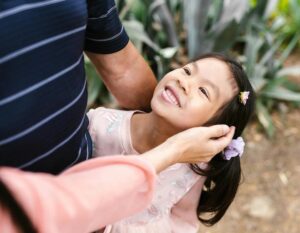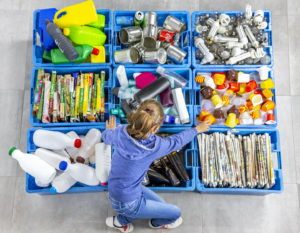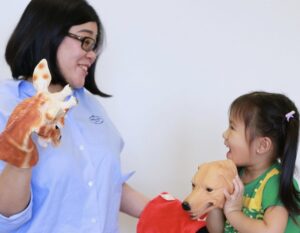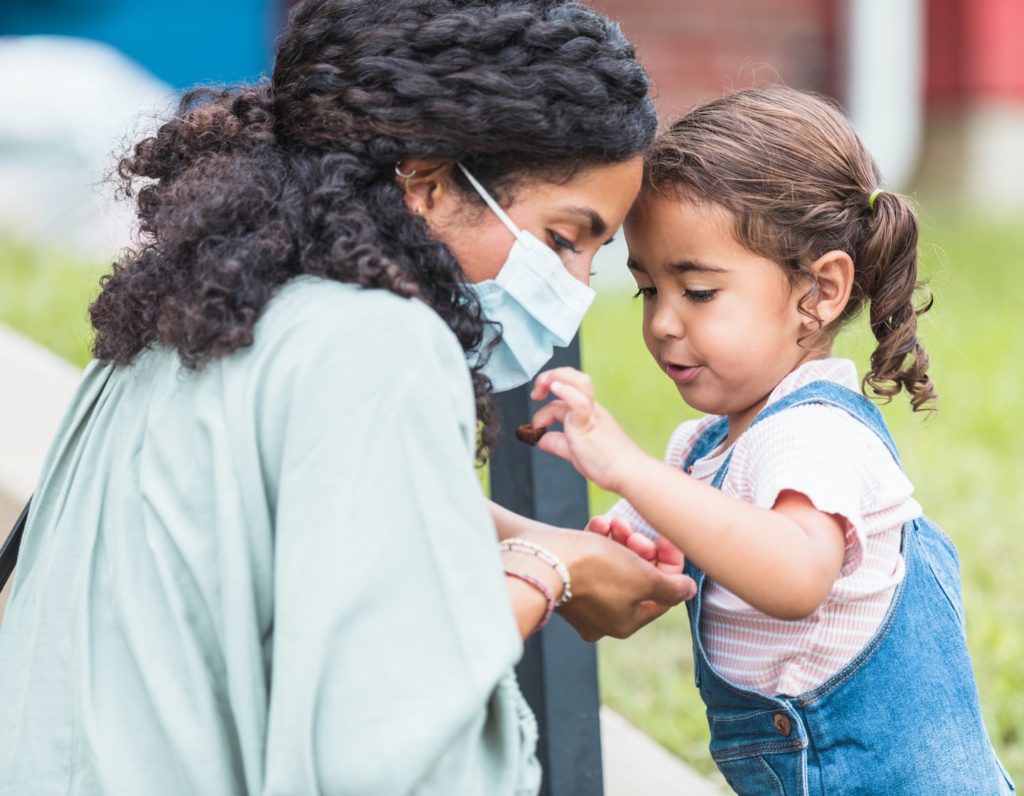
 Post Category - ParentingParenting - Post Category - BabyBaby - Post Category - Toddler & PreschoolerToddler & Preschooler
Post Category - ParentingParenting - Post Category - BabyBaby - Post Category - Toddler & PreschoolerToddler & PreschoolerMasks, lockdowns, safe distancing regulations… are these having an impact on our children’s speech and development?
For many kids in Singapore, wearing masks is ‘normal’. Very young kids have grown up seeing parents, carers, and teachers wearing masks covering their nose and mouth when they are at school or outside. Older kids have adjusted to home-based learning spending more and more time in front of screens. But have these ‘pandemic habits’ impacted their development at all? As a Speech and Language Therapist working in Singapore, I have seen a rise in toddler referrals as well as parents calling for advice regarding their toddler’s speech and language development. Some of the issues I have seen include:
- A rise in toddlers (age 16-24 months) with limited expressive language skills
- Toddlers and young children with shorter attention spans and fleeting attention
- Increase in mouth breathers in young children
- An increase in children displaying limited play skills/ less pretend play
- An increase in tantrums or becoming upset easily during non-preferred activities
- An increase in children with low oral muscle tone
Why are we seeing this rise in developmental issues?
Is there evidence to suggest that mask-wearing and/ or the pandemic is the cause for the above? I think we are all aware of the environmental changes that have occurred during the pandemic, and we can logically see how these might impact children’s learning e.g.
- Less social interactions and fewer social experiences
- Interrupted school attendance
- Increase in screen time
- Interacting with others while wearing masks which impacts how the words sound, restricts being able to see lip movements/ facial expressions etc.
Read More: Boost Your Child’s Confidence & Communication Skills with Speech & Drama Classes
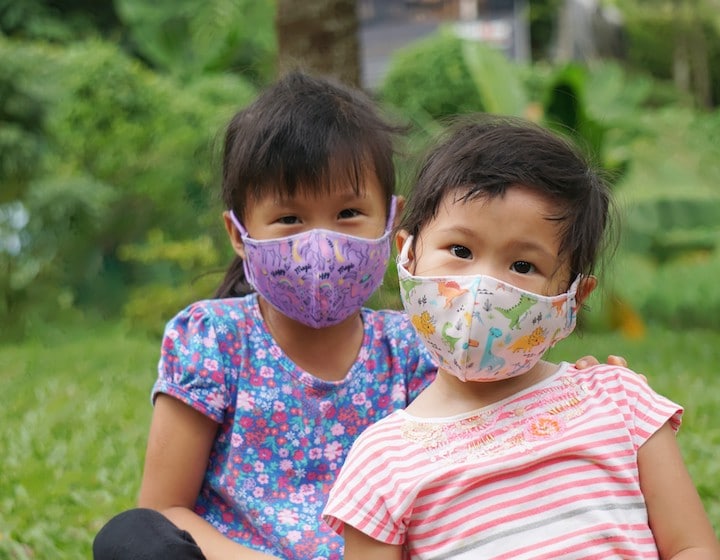
Is wearing masks to blame?
Currently there is no strong evidence stating that mask wearing HAS an impact on speech and language development. However, there is also no evidence showing that there is NO impact. What we do know is that nonverbal communication makes up 70-90% of our communication. Nonverbal communication is made up of facial expressions, body language, gestures etc. We also know that children with speech sound disorders rely heavily on being able to see a speaker’s lip movements to help support their own speech.
Many speech therapists across the globe, including myself have also seen an increase in mouth breathing, therefore resulting in speech sound difficulties, sleep apnea, drooling etc. This has been an interesting and of course worrying phenomenon that we are following closely and hope to get a better understanding of why this may be occurring.
25% increase in children diagnosed with developmental delays
In a recent Straits Times article, we saw that there has been a 25% increase in young children being diagnosed with developmental delays in the past 5 years in Singapore. The article stated that “Experts have observed disconcerting signs among children because of pandemic-induced habits”. The article also mentioned that speech and language delays accounted for many of these developmental delay diagnoses. It is worth noting that while MOH attributed the increase to factors including better awareness of developmental issues in early childhood and improved screening, doctors are worried that excessive screen time is also one of the contributing factors.
Dr Christelle Tan of KK Women’s and Children’s Hospital said “Because of Covid-19, many parents have avoided playdates and playground visits, while some have removed their children from infant care or childcare centres to limit their exposure to others. The reduction in social interaction, cognitive stimulation and increased screen use may result in language delays and delays in social development in toddlers”.
In the UK, data from 50,000 pupils and a survey of schools across England have shown an increased number of four- and five-year-olds needing help with language. ‘The Education Endowment Foundation (EEF) research suggests the measures taken to combat the pandemic have deprived the youngest children of social contact and experiences essential for increasing vocabulary.”
One Longitudinal study completed recently showed that babies born during the pandemic are not learning at the same pace as babies born before the pandemic. The study is from Rhode Island Hospital and Brown University in the Northeast US as a part of a longitudinal, and ongoing project to track child neurodevelopment beginning in 2011. Authors compared scores from the preceding decade (2011 – 2019) to babies born in 2020 and 2021 using The Mullen Scales of Early Learning. Scores were down across all areas of learning- verbal, motor and cognitive skills.
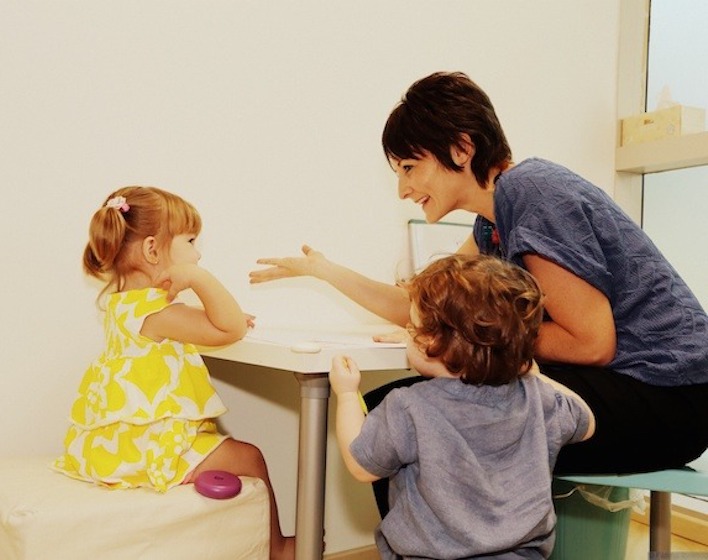
Will kids be able to ‘bounce back’ or ‘catch up’?
Okay, so we know there is an impact. Research is still being done to help us understand it better and also most importantly help us understand if children will “bounce back” or “catch up” to their developmental milestones or if specialised support is required.
If you are worried about your child’s development, speak to your doctor at their check-up or get professional support as early intervention is always best. Your child may not need ongoing support; however, as a parent/ caregiver, you can learn some strategies to help facilitate speech and language development.
Here is some general advice for parents with kids up to 5 years old:
1. When at home (mask-free) try to put aside some time each day to play/ converse/interact with your child. When doing so, try to be at their level to ensure they are able to see your face/lips.
2. Whenever physically possible, ensure your little one can see your face when you are talking with them or playing with them. For example, play with them while they are in a highchair, lifting them up onto a counter while you stand in front of them, talk to them when they are lying down for a nappy change, lay on your tummy when they are playing on the floor etc
3. Try limit screen time if possible. We all used screens to help us get through the days of lockdown/working from home etc; however The American Academy of Pediatrics discourages media use, except for video chatting, by children younger than 24 months. For children ages 2 to 5, limit screen time to one hour a day of high-quality programming.
4. Now that things are slowly starting to open up, try to expose your child to varied (screen-free) experiences. These don’t have to involve spending a lot of money. E.g. visit the different farms in Singapore, visit different parks/ playgrounds, learn new skills together- cooking, painting, tie-dye (a personal favourite) etc. Varied experiences provide opportunities for children to learn new words, be exposed to learning new skills and therefore develop a range of neuropathways and helps develop executive functioning skills.
5. Comment and narrate your experiences and activities when you are with your child. Describe what you are doing, even with familiar everyday routines.
6. If your child says a word or attempts to say a word, repeat it back and perhaps even add to it e.g.
Child: “wawa” (pointing at a flower).
Adult: “flower” “pretty flower”
Child: “dog eat”
Adult: “ooh yes the dog is eating food”.
Connection is the key!
But mamas (and papas) the most important message to take away from this article is not that the situation is dire but rather how important connection is. And in many ways lockdowns, HBL and WFH situations and the pandemic have created opportunities for us to do just this – connect. Connection with our children is the key to both communication development and building positive relationships which in turn will promote a positive mental health. Make time to connect with your child, connect with a loved one and of course connect with yourself!
For more ideas, here are some resources:






 View All
View All



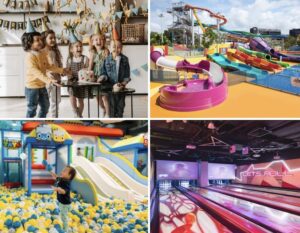
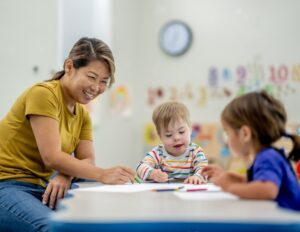
 View All
View All








 View All
View All


